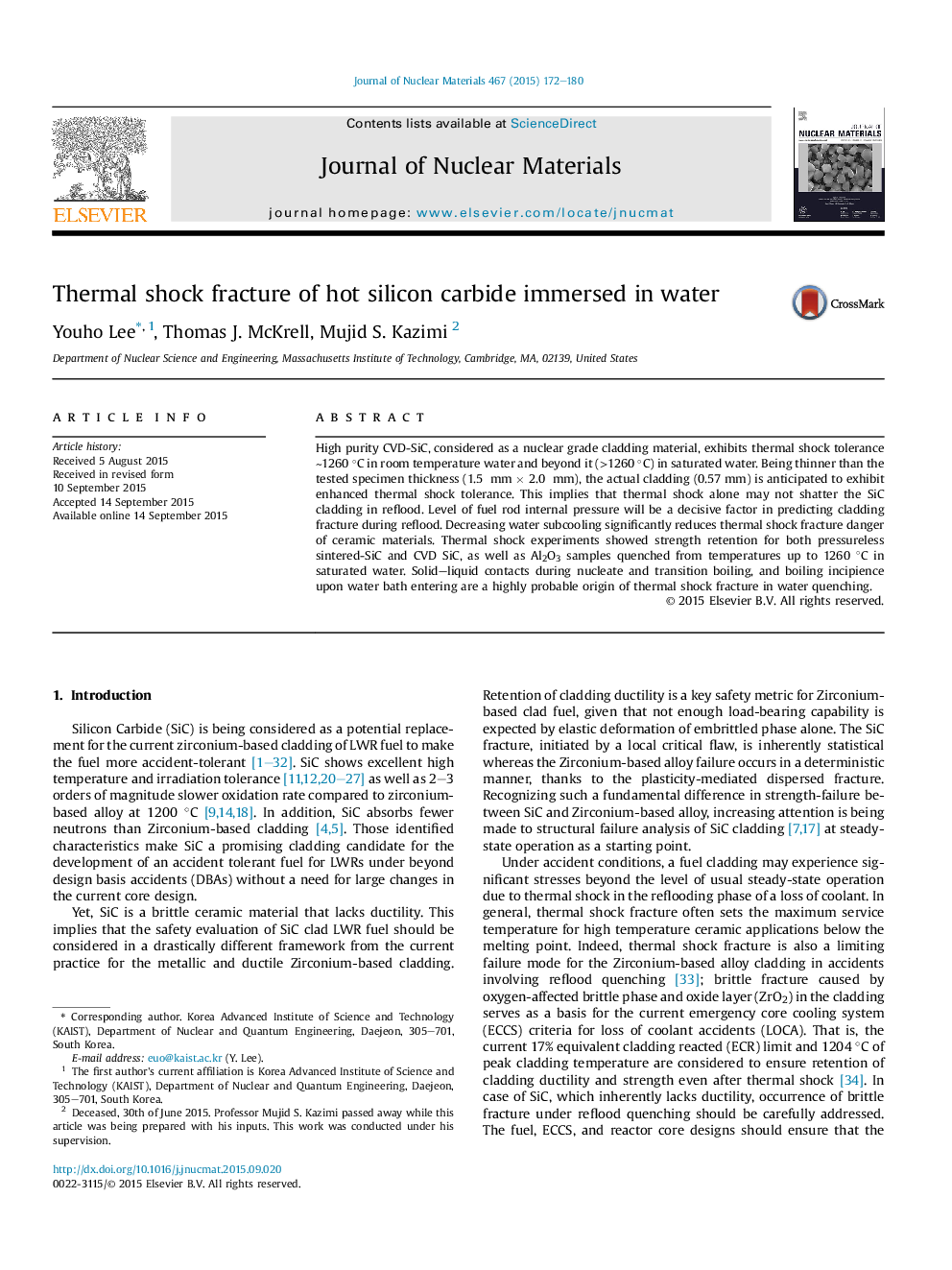| Article ID | Journal | Published Year | Pages | File Type |
|---|---|---|---|---|
| 1564872 | Journal of Nuclear Materials | 2015 | 9 Pages |
High purity CVD-SiC, considered as a nuclear grade cladding material, exhibits thermal shock tolerance ∼1260 °C in room temperature water and beyond it (>1260 °C) in saturated water. Being thinner than the tested specimen thickness (1.5 mm × 2.0 mm), the actual cladding (0.57 mm) is anticipated to exhibit enhanced thermal shock tolerance. This implies that thermal shock alone may not shatter the SiC cladding in reflood. Level of fuel rod internal pressure will be a decisive factor in predicting cladding fracture during reflood. Decreasing water subcooling significantly reduces thermal shock fracture danger of ceramic materials. Thermal shock experiments showed strength retention for both pressureless sintered-SiC and CVD SiC, as well as Al2O3 samples quenched from temperatures up to 1260 °C in saturated water. Solid–liquid contacts during nucleate and transition boiling, and boiling incipience upon water bath entering are a highly probable origin of thermal shock fracture in water quenching.
